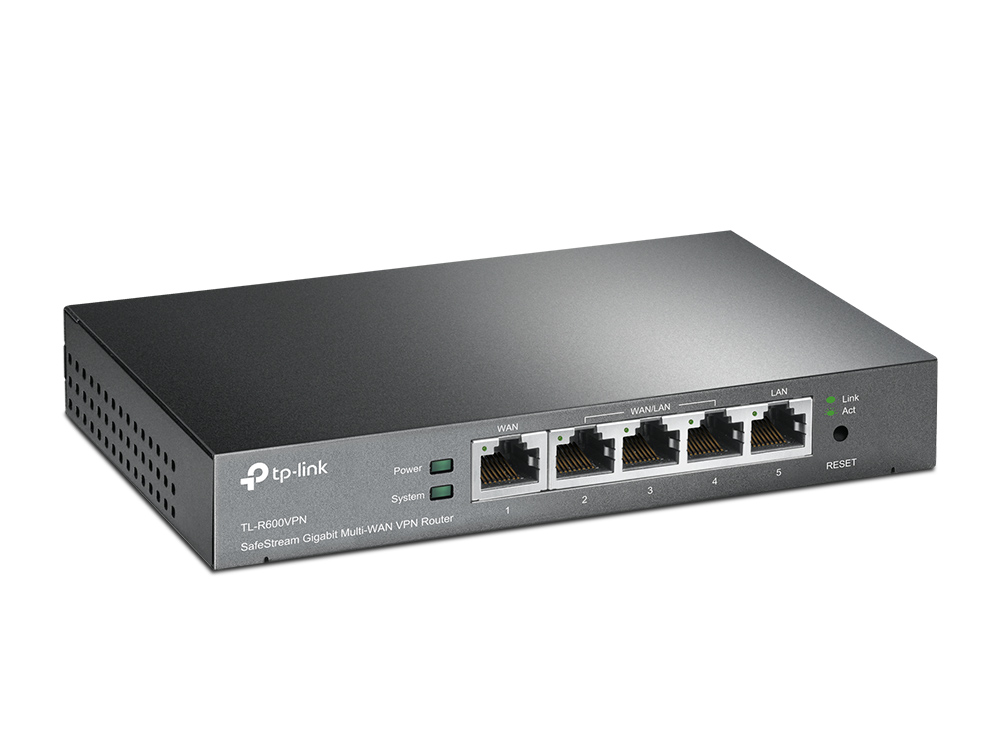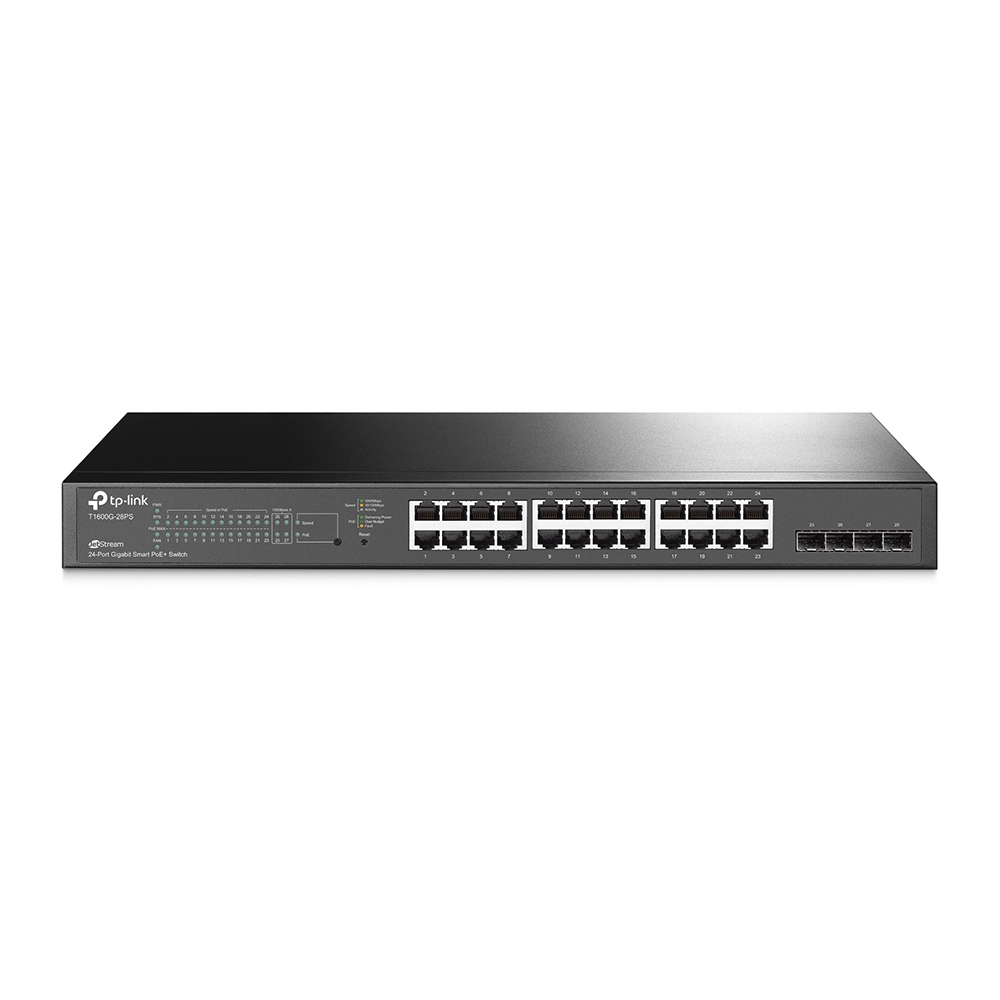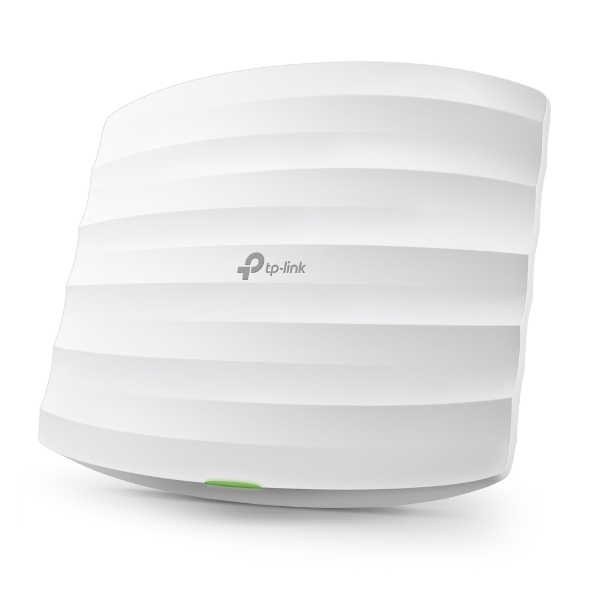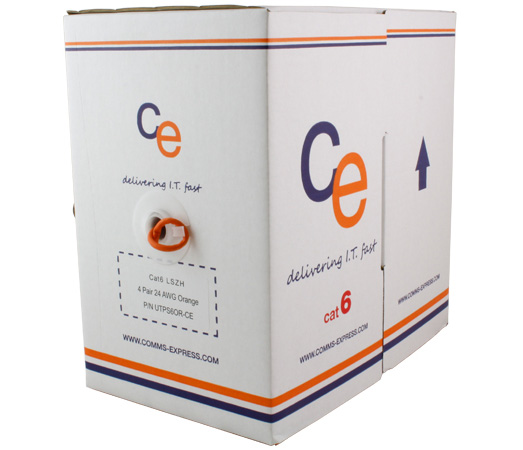How to Setup a Small Business Network
Pubished 21 February 2019
The Scenario
For the purposes of this article, a customer has asked The Soho Digital to design and install a network for a new office they’re moving into. Our customer runs a company employing 15 people who will use computers at their desks with wired network connections. WiFi will be used by visitors to the office and by staff to connect their mobile phones. The business is growing so the design should meet the immediate requirements while allowing for future scalability.
We do not use affiliate links in this article, so recommendations are made because we believe the product is most suitable for the scenario and represents a good balance of cost vs. functionality. We use mainly TP-Link network equipment at The Soho Digital which is why you'll see several references to their products.
Topics
Network Design and Topology
All networks should start with a design and the physical network diagram illustrates the topology (network equipment and how it's connected together) of the Local Area Network (LAN). This design will be used to compile a list of equipment needed for the install.
How much does a small business network cost?
At the time of writing, all the equipment, cable and accessories required to build this purpose-designed small business network cost around £530 ex VAT; a worthwhile investment for reliable, high quality equipment which can be easily extended to cater for future business growth.
Small Business Routers
A router is used to direct network traffic between different networks. In a small business, the most obvious (and often only) example of this is connecting the internet with your office network, two separate networks that need joining in order to provide internet access to all network users. A good quality small business router will come with features such as Virtual Private Networking (VPN) to enable remote workers to connect to the office network, a configurable firewall to keep intruders out, load balancing and failover. Load balancing and failover features make it possible for two internet connections to be hooked up, which provides additional internet bandwidth and resilience in case one were to fail.
Separate firewall appliances can be purchased, but for a small office the firewall software on a business-grade router is usually appropriate and proportional. A separate firewall appliance can always be added later as a business grows, or from the outset if particularly sensitive data and needs specialist features only a dedicated firewall can provide.
Internet connection speeds are still usually a lot lower than the speeds possible on the internal network that we are building here. When selecting a router, it's important to choose one capable of operating at a higher speed than the internet connection to ensure the connection can be fully utilized and to provide some future proofing.
ISP Modems and Routers
Most ISP's will supply a combined router and modem with an internet connection. We recommend investing in a dedicated small business router for optimum network performance. The modem/router provided by your internet provider will still be used for the physical internet connection and will be attached to both the phone line or cable and the WAN port on your dedicated router. The ISP-provided device will need to be put into 'modem only mode' to avoid conflicts with your dedicated router.
Choosing a Router
The TP-Link TL-R600VPN router we've highlighted here has a 1Gbps Wide Area Network (WAN) port which is suitable for all but the very fastest of interest connections available in the UK today.
Small Business Network Switches
Network switches are seen in abundance within networks and used to connect all manner of wired devices to the network, including but not limited to computers, laptops, CCTV cameras, servers, storage devices and WiFi access points.
A switch used to connect devices on the periphery of the network eg. computers, CCTV cameras etc. is referred to as an access switch. A switch towards the centre of the network, to which access switches are attached, is referred to as a core switch.
Types of Network Switches
'Managed switches' and 'smart switches' can be configured to meet the needs of businesses, where as an unmanaged switch might provide plug-and-play simplicity but cannot be configured and may be better suited to home users. Managed switches are highly capable and configurable, often via a text-only command line interface (CLI), and usually seen in Enterprise environments. Smart switches are a middle ground between fully managed and unmanaged, marketed more towards smaller businesses and usually have a web interface through which configuration is completed.
Managed and Smart Switch Benefits vs. Unmanaged
Two practical benefits smart switches hold over unmanaged switches are the inclusion of Spanning Tree Protocol (STP) and link aggregation functionality.
STP can detect and elegantly handle any network loops that have been introduced. Network loops are used legitimately to provide resilience by, for example, connecting the final switch in a daisy chain back to the first switch. If a middle switch were to fail, the subsequent switches can send traffic via the first switch instead. Without STP, this topology would cause a broadcast storm, an event which overwhelms the network with traffic making it unusable.
Link aggregation combines two or more available switch ports to increase bandwidth on select network segments. This is a useful feature when all of the existing ports on a switch are in use and a second switch needs to be introduced. If two switches are connected using a single cable, then all of the devices on the second switch have to share the bandwidth available on this one link, which may cause congestion. Link aggregation allows for two or more links to be viewed as one, which doubles the available bandwidth and will help ease any congestion.
Stackable Network Switches
'Stackable' switches provide an efficient way to rapidly deploy further capacity when needed with the setup of additional switches usually involving little more than connecting and powering on. The stack is viewed and configured as if it were one large unit, making management easier.
Stacked switches are connected using very high bandwidth links and therefore are not bandwidth constrained to the same degree as switches connected in a daisy chain.
Power-over-Ethernet (PoE)
Switches with Power-over-Ethernet capability (PoE) can provide both data and power to an attached device using a single network cable. PoE is an excellent development which reduces the number of cables and power outlets required to install infrastructure such as WiFi access points and CCTV cameras which can both utilise PoE.Choosing a Switch
We often specify Gigabit switches for both access and core to future-proof, or for tighter budgets access switches may be 100mbps. Access switches can usually operate at lower speeds because for the devices typically attached, office computers, will very rarely use the full 1Gbps available bandwitch.
The TP-Link T1600G-28PS is a gigabit smart switch suitable for this scenario. With 24 ports PoE, it has enough capacity to get a small office network online and can power PoE devices such as WiFi access points.
The non-PoE version of this switch (28TS in the model name rather than 28PS - T1600G-28TS) is roughly half the cost at just over £100. The WiFi access point recommended in the next section has a PoE adapter in the box which means a PoE switch is not necessary to power the access point. If budget allows, we'd suggest the PoE version because it'll provide future-proofing and enable for devices like Voice over IP (VoIP) phones to be used in the office space, but the TS is a good substitute if that isn't feasible.
In this scenario, no access switches will be required because in an office of 15 people, a minimum of 15 ports on the switch will be used for wired network access. If it's assumed 1 WiFi access point will use another of the switch ports (covered later in this article), the link to the router will user a further port, the number of ports in use will be 17. This leaves 6 free for future expansion.
Wireless Access Points (WiFi)
Wireless Access Points are used to provide a WiFi service to office users. The number of access points required to provide ubiquitous coverage is hugely dependent on several variable factors such as the shape of the office space, how the office is constructed (eg. dry wall or brick wall partitions), the number of users and the type of usage (eg. light web browsing of heavy video streaming).
Only a survey of the physical space will provide a clearer idea of Wireless Local Area Network (WLAN) design, but some assumptions can be made about WiFi use. On an average day in the office, perhaps 8 staff connect their mobile phones using WiFi, 3 staff work on their laptops using WiFi in a communal area, 2 visitors to the office have also connected laptops to the WiFi and finally, a further 5 miscallenaous devices such as smart watches or tablets have been connected.
In this case, the total number of connected devices is 18. This represents a more than manageable volume of users and usage types for one access point and given that an office for 15 staff is likely to be small, it can be assumed that one access point will be suitable for this deployment.
If poor WiFi performance is experienced, additional access points can be purchased and existing access points repositioned to find an optimal setup.
Small Business WiFi Features
As with all networking equipment, there's a large variety in the market place. Some of features we look for in WiFi access points for our customers are:
- Supports the latest 801.11ac WiFi standard for the fastest speeds
- Has Multiple-input Multiple-out (MIMO), to attain high transfer speeds
- Power-over-Ethernet (PoE) support so only one cable is needed from our PoE switch to the access point, used for both power and data
- Ceiling or wall mountable for optimum coverage
- Handles multiple Service Set Identifiers (SSID's) - the SSID is the WiFi network name and it is good practice to define separate WiFi networks for staff and visitors for security purposes
- Quality of Service (QoS) so fair access can be provided to all users, and no one person is able to consume all the available bandwidth
- Supports client isolation, a security measure which prevents connected devices from talking to one another
Choosing a WiFi Access Point
At The Soho Digital we're a fan of TP-Link's EAP225 Omada access point which provides an extensive set of features, including all those listed above, for a fair price.
Network Cabinet and Patch Panel
Cabinet
All the core network equipment (routers, switches, any hardware firewalls, your internet provider's modem) should ideally be located alongside one another in a network cabinet to facilitate a neat and tidy installation. The cabinet should be installed in a cool, dry, easily accessible yet secure location. The network cabinet is where all network cables to desks and connected equipment will originate from, so easy access to the roof or under-floor is very useful.
Purpose designed office space usually has a suspended ceiling and a raised floor to facilitate utility installation and may have purpose-built cable trays along which network cable can be run.
Network cabinets (also referred to as 'racks') come in different 'unit sizes,' with a unit being standard industry measurement. For example, a 6U (U = unit) cabinet will have 6 slots for network equipment or servers. Check the specification of your equipment to find out how many units it will fill. Most network equipment required by a small business will fill one unit.
The Datacel 6u Mounted 390mm Deep Data Cabinet we've highlighted here is 6U and so has space for 6 pieces of equipment. In this example, the switch will be mounted in the cabinet along with a patch panel (see below). The router is too small to be mounted in a rack and instead will be positioned on a shelf in the cabinet, next to the ISP's modem.
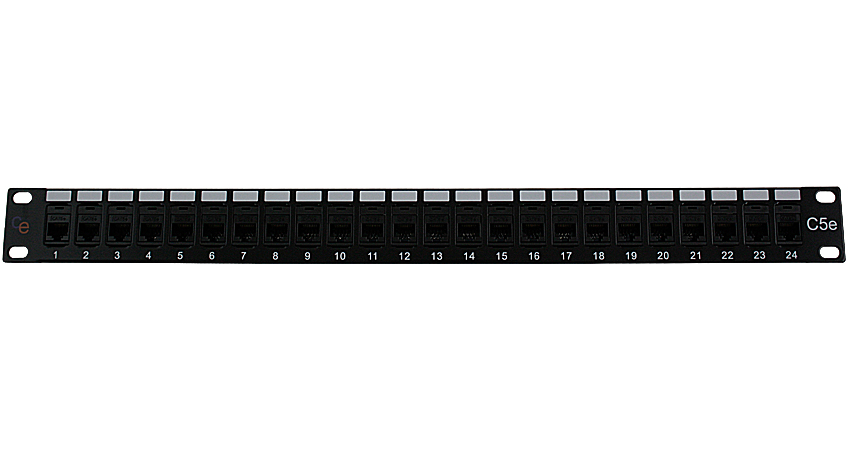
Patch Panel
Patch Panel
Patch panels allow network cables coming in from network points around the building to enter the rear of the cabinet and be terminated using an RJ45 connector (the standard plugs found on the end of ethernet cables) at the rear of the patch panel. Punch down patch panels are also available which do not have RJ45 connectors on the rear, instead cables must be individually punched down. Punch down patch panels are less time consuming but we prefer the 'through coupler' variety with RJ45's on the rear for tidiness
All the ports on the rear have a corresponding port on the front of the panel. Patch cables (short pieces of network cable) connect each port on the patch panel to a port on the front of the switch. Patching in this manner means that cabling is neat and tidy which makes troubleshooting any issues far easier.
All the incoming network cables will enter the cabinet at the rear and terminate on the back of the patch panel, which should be installed in the top most rack within the cabinet, followed by the switch directly beneath.
We've picked out the Comms Express 24 Port Cat6 Patch Panel 1U to use in this setup. When choosing a patch panel, ensure that it matches the chosen cable category (eg. Cat 6 in this example).
Ethernet Cables
Ethernet cables are used to connect all the equipment together and for this small office network, there are two distinct areas we need think about when it comes to cabling. The first is inside the network cabinet and the second is distribution from the cabinet to the office.
Ethernet Cable Categories
Cable selection is important because it is a factor in dictating your network's speed. The two most common cable categories in use today are Cat 5e and Category 6. Cat 5e can support up to 1Gbps and Cat6 can support up to 10Gbps on cable lengths up to 55m.
Cat 6 cable is roughly 30% more expensive than Cat 5e, but we recommend investing in Cat 6 throughout the whole network to allow for some futureproofing. Cat 6 is also less susceptible to interference from office lighting and mains power circuits.
At a minimum, Cat 6 should be used in the core network, for example to link access switches to core switches, and Cat 5e for distribution to workstations and wall outlets. Cat 5e is more than capable and will not cause any severe performance degradation should a compromise have to be made.
Estimating Cable Length
There's no exact science in estimating the total length of network cable required for distribution. Taking into consideration that cables will not take a direct route from the network switch to staff desks, we could estimate that the average cable length is 20m. If the office has 15 desks and 1 WiFi access points, that's 16 cables at 20m each, making a total of 320m.
Comms Express sell a 305m box of Cat 6 cable; a few metres short but should be sufficient for distribution wiring. This cable is also low smoke and zero halogen meaning it will not emit as much smoke as a PVC cable, and no halogen, in the event of a fire.
Inside the cabinet, far shorter cable lengths are required to connect patch panel ports to switch ports and attach other devices within the cabinet such as the modem to the router. Cable Monkey sell 0.3m Cat 6 patch cables for use in the cabinet; roughly 20 of these should be enough for this deployment.
Wiring the Office Space
Long lengths of network cable will need to be run from the back of the patch panel to the termination points in the office space, at desks for example. Laying cable from one place to the other may seem a simple task at first glance, but there are usually multiple challenges to overcome. For example, assumptions could be made about wiring routes in the ceiling, but once in the ceiling and attempting to lay cable an undocumented partition may be encountered and a new route must be found.
Experience plays a large part in determining how quickly and neatly cables can be laid, but having the correct tools helps everyone no matter amateur or expert. We're not discussing tools in this article, but RJ45 crimpers and electrician's 'fish wire' (used to pull cables through hard-to-access spaces) should be in any network installer's toolbox.
Where possible, network cable should be run away from mains power cables to avoid interference. Care should be taken to avoid sharp bends and mitigate the risk of cable damage where the cable crosses any sharp edges. Cable lengths should use a short a length as possible but must be not be under any tension. Velcro and plastic cable ties can be used to bundle cables together. At The Soho Digital we prefer to use Velcro straps because they can be adjusted multiple times where as a cable tie has to be discarded if a mistake is made. All cables should be labeled on either end and tested using a cable test tool. Find more cable management tips here.
Other Factors Affecting Network Speed
Your network will be only as fast as the slowest link between two communicating devices. For example, if a 1Gbps capable device is connected to a device capable of only 100Mbps, the transfer speed will always be limited to 100Mbps, and that is a theoretical maximum. Factors such as cable quality and type, as well as network congestion and processing overhead will mean the real-world speed is less than this.
As a reminder, note that file size and transfer speed are measured in different units. A transfer speed of 1Mbps (Megabits per second) does not equate to a 1MB (Megabyte) file every second. 1 Megabyte is made up of 8 Megabits, and therefore it would take 8 seconds to transfer a 1MB file with a transfer speed of 1Mbps.
A 100Mbps link will transfer 12.5Mb every second.
A 1Gbps link will transfer 125Mb every second
Network Installation
Installation can begin once equipment has arrived on site, starting with racking the switch in the cabinet. The modem and router selected in this article are not designed to be rack mounted but can safely operate while resting at the base of the cabinet. Alternatively, a metal cabinet shelf could be added to lift them off the base. Other accessories are also available for cabinets such as cable tidies to channel cables vertically down the left and right edges of the cabinet.
Before any office devices are connected, equipment should be powered on and configured to meet the needs of the business and secure the network. Local testing with laptops plugged into the switch should be conducted to ensure everything is working as expected.
One testing is complete, distribution wiring completed and connected, some configuration tuning may be necessary have the network operate as efficiently as possible.
Total Cost and Order List
The total cost of all the equipment and components recommended in this build is £528.44 ex VAT. All prices below are ex VAT.
Contact us for a quote to have this setup profesionally intstalled in your office.
- 1 x Router:
TP Link TL-R600VPN - £48.76 from Comms Express - 1 x Switch: TP Link TL-SG2424P - £210.83 from Comms Express
- 1 x WiFi Access Point: TP Link EAP225 - £52.63 from Comms Express
- 1 x Cabinet: Datacel 6U Wall Mounted 390mm deep - £60.00 from Comms Express
- 1 x Patch Panel: CE 24 Port Cat6 Through Coupler Patch Panel 1U - £52.00 from Comms Express
- 1 x Ethernet Cable Box: CE Cat6 Cable U/UTP Dca LS0H 305mt Box - £69.62 from Comms Express
- 20 x Patch Cables: Cat6 Booted UTP LS0H Patch Lead 0.3m - £17.60 from Cable Monkey

